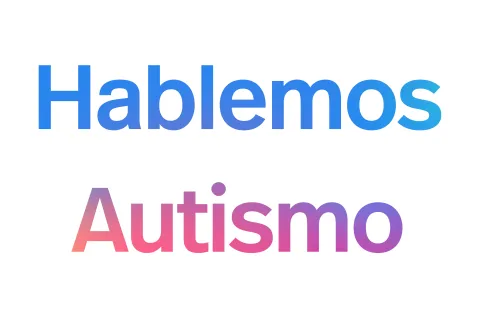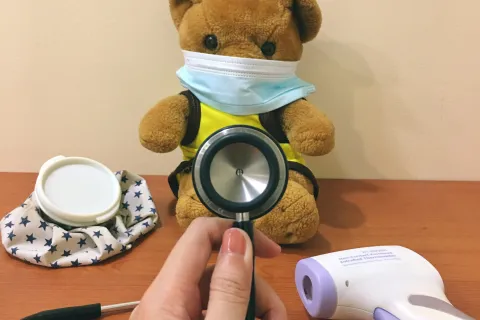Carrying a heavy load with back-to-school choices?
Schools across the country are continuing to debate whether the new school year should begin in the classroom, at home with e-learning or as some combination of both – and families are grappling with the same questions to determine what’s right for them. These questions can be especially challenging for students on the autism spectrum, who may receive critical, in-person services and supports through school.
Decision-making by officials will vary by region and even by school, and many districts will offer families the ability to choose the option that works best for their child and the family. If you have older children or teens, make sure to connect with them about their questions and concerns about the options available to your family. Having input on this decision can enhance their engagement with the learning process regardless of which option your family chooses.
Some parents may feel that their child will benefit through in-person classes, in addition to any direct support their child receives at school. Many worry their child might struggle with e-learning for any number of reasons. Some also might feel that the health risks associated with COVID-19 might outweigh the benefits of going back to the classroom. These choices are also limited by the demands of parents and caregivers who are also juggling work demands or facing uncertain employment situations.
There are many factors to consider when determining what is best for your family. Each option offers pros and cons. The important thing is finding what’s right for your child.
In-person Learning
Families in many areas of the country will have the option to continue in-person learning, most likely with new health and safety guidelines to help prevent the spread of COVID-19 at school.
Benefits to in-person learning include:
- Supported instruction provided directly by trained special education teachers
- Support by one-to-one aids or paraprofessionals throughout the day
- Opportunities for socialization, which can be critical for students with autism
- Availability of extracurricular or afterschool programs that can help your child develop skills and participate in activities outside the classroom
- Return to a setting that is familiar to your child
Some drawbacks to in-person learning are:
- The potential for the virus to spread among students, teachers and parents, particularly in homes with immune-compromised family members or those with other underlying health conditions
- Difficulties in adapting to new routines, such as staff changes, use of indoor and outdoor space, transportation and bussing, and requirements for health and safety, including wearing masks for extended periods of time
- Dealing with another disruption in learning if a school must close again during the pandemic
- Potential challenges the school may face in contact tracing and informing families, should a case or cases of COVID 19 develop on the school campus
- Challenges in facial recognition due to others wearing masks
- Compounded communication and auditory processing challenges, due to mask wearing
These critical factors will be important considerations for your family, particularly if someone in your home is at greater risk of contracting or becoming seriously ill from COVID-19, has sensory sensitivities, communication differences, or struggles with anxiety or changes in routines.
If you do choose for your child to participate in in-person learning at school, there are some tips you can use to help maximize the benefits of this option.
Health and safety:
- Prepare your child as best you can for the methods that will be used to help prevent the spread of the virus. Practice wearing masks well in advance of the first day of school – you can use our mask-wearing tips for parents and caregivers and for teens and adults to help get you started.
- You can also practice interacting with others using the minimum distance requirement outlined by your school. There might be new routines, language and sensory input from sanitization procedures that you can introduce to your child before school starts. Ask your school for this information so you can start now!
- Review hand-washing routines and when hand sanitizer can be used. You can use social stories to introduce these ideas and use a simple song to reinforce how long to spend washing.
Routines:
- Make sure you understand and make your child aware of changes to school protocol. For example, at some schools you may no longer be able to walk them into the building, or buses will have a different system for assigned seating to maintain distance. Your child may be staying in the same classroom and seeing a smaller group of classmates than before.
- Emphasize the positives to all these changes to help limit the fear that might be associated with changes in routine. Help them understand why these changes have been made and that they are in place to help keep everyone healthy and safe. Let them know that there will still be a routine and schedule at school, it just might look different than it did last year.
- Continue to talk about the potential return to e-learning in case there is a spike in your area. Set up a homework station where they will end up learning if schools close, so they can prepare to learn in that particular place. Have your child try free online learning activities or watch videos of teachers so they can keep up with their computer skills.
Virtual Learning
Many schools across the country will mandate e-learning or give families the choice to continue learning remotely.
Benefits to e-learning include:
- Fewer distractions while learning, including other children and potentially unexpected sensory experiences
- The opportunity for your child to learn at their own pace, with breaks when necessary
- Ability to motivate your child with rewards that might only work in the home or with your child specifically
- No obligation to teach new policies and procedures that may be difficult to understand
- Reduced exposure to others and lower potential to contract COVID-19 at school
Drawbacks to remote learning include:
- Lack of socialization and extracurricular opportunities that help children grow outside the classroom
- Challenges focusing on a screen and engaging sufficiently in remote instruction to understand the lesson
- Lack of professional support services to support your child’s learning needs throughout the day
If you do choose for your child to participate in online learning, there are some tips you can use to help maximize the benefits of this option.
Setup:
- Be sure your child has a quiet space with limited distractions where they can focus to the best of their ability on the online lessons. If possible, keep them separate from their siblings who are participating in different lessons.
- Do your best to minimize your stress level. You might be worried that your child isn’t learning the same way they would in school and will fall behind other children as a result. You may also be juggling learning support with your own employment. If you can plan ahead to schedule work and school demands, this may help make it work.
- Focus on what you can control and celebrate even small successes.
Make a Plan:
- Establish a routine as much as possible throughout the day. Most children with autism do best with a routine to learn to their fullest potential. Visual schedules or checklists, to help your child know exactly what will happen that day, can help them focus on learning. Find some of these visual tools here.
- Provide reinforcements for positive behavior and focus on the lesson plans. If/then cards may help so they understand, for example, if you complete this short math class and these five problems, you can watch a YouTube video. This can help encourage successful learning.
- When you can, think of ways that your child’s play can also support learning. This can enrich the lessons presented in their online classwork. They might draw pictures about a subject they are learning, or solve a challenge or puzzle related to their favorite game or character. You can both also benefit from recess-like breaks for physical activity. These small things add up!
Hybrid Model
If you do not feel that full-time in-person learning or all virtual learning are the best option for your child, speak to your school distract about other options. Some schools will mandate a mix of virtual and in-person. Use the tips above to maximize learning in both situations.
If hybrid learning is not the right choice for you, many parents are seeking out other ways to help their child learn during this difficult and unpredictable time.
Other Options
Learning Pods
Learning pods are emerging as an alternative solution for families, using the buddy system combined with their school’s virtual learning option.
Pods are small organized groups of students – usually from two to three families - who learn together in person, most often in someone’s home. Parents or caregivers can share the learning support duties for their kids, either on a rotating co-op basis or pooling funds to hire a tutor to lead the pod.
You may consider reaching out to the family of a classmate who receives similar services or is part of a peer mentoring program to create a pod, for part or most of a school day. You may also want to explore including an aide or other paraprofessional in your pod who has experience providing support to students with autism at school or in other settings. This person might help with behavioral or other challenges so that learning can be maximized in your pod setting.
Pods have the potential to improve access to learning only for those with greater resources. They can also decrease the funding and resources available to the children who continue to be enrolled at school. For example, families of essential workers and those without resources for a dedicated tutor and service providers may not be able to access or participate in a pod. While they have many benefits, it is important to consider the greater impact of pods on your community when deciding whether to participate.
Homeschooling
Some parents will want to eliminate all exposure to the virus and teach their own child in their home. In this situation, without a school support system, you must train yourself to effectively provide a strong education. You will need to establish your own goals for your child and monitor their progress on your own.
Homeschooling usually involves withdrawing your child from your local school district, which can affect school funding in your community. States have varied legal requirements about registering as a homeschooler and the documentation of learning that you must provide. Get in touch with your state and local education departments for details.
Service providers in the home
Some parents might choose to have private or insurance-paid service providers in their home, such as ABA therapists, speech pathologists or occupational therapists. These providers can develop a curriculum for your child based on treatment strategies used in therapy programs, so the focus can be on learning classroom materials, as well as improving social skills, communication abilities, sensory challenges or repetitive behaviors.
Making a hard call
Think about your child’s strengths and challenges, as well as your family’s specific needs, to determine the best option for your child. Discuss the options with your child’s teachers, school administrators and therapy providers to get a better understanding of what is available and how your child’s learning needs will be met in each scenario. While there may not be one perfect solution for everyone, you may find that one option will offer the right support and the best possible education for your child, while balancing the needs of your family’s health, safety and employment.








